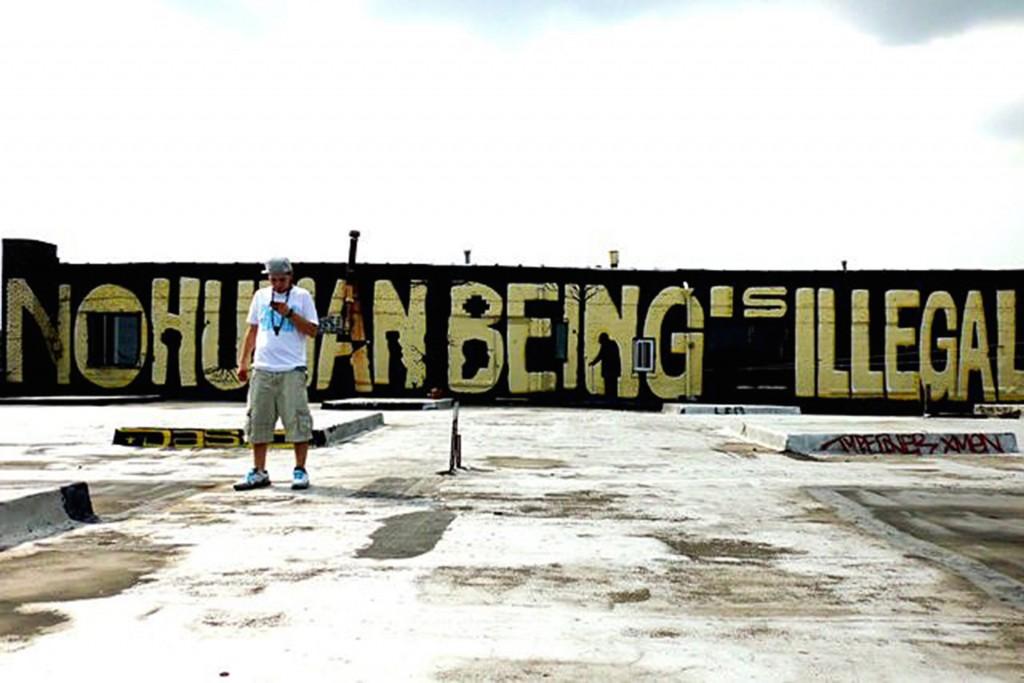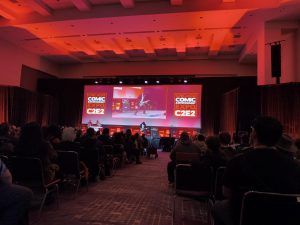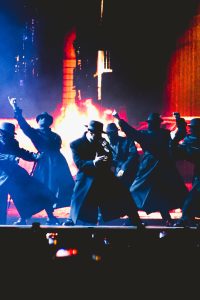Review: ‘Rebel Diaz: Culture has the power to move’
June 3, 2014

Hip-hop duo Rebel Diaz gave an audience at NEIU a lesson in hip-hop. It wasn’t on a stage, as one might expect, but rather in a classroom where they presented the history of hip-hop, particularly focusing on how hip-hop is a product of immigrant culture.
On May 1, 2014, G1 (Gonzalo Venegas) and Rodstarz (Rodrigo Venegas), two brothers from Chicago, came to NEIU for their love of hip-hop, but also to spread their message in support of immigration reform.
They began by recognizing May Day or International Worker’s Day, a celebration of laborers and the working class. May Day also commemorates the May 4, 1886 Haymarket riot in Chicago, a labor strike at Haymarket Square that turned into a riot after a bomb was thrown at police.
In the presentation, they took turns showing how immigrants contributed to this culture of hip-hop.
“As a hip-hop generation, it’s only right that we stand up for immigration,” Rodstarz said.
After moving to the New York, the duo became fully immersed in the birthplace of hip-hop—the South Bronx. This place was an immigrant community where many Afro-Caribbean (Cuban, Haitian, Jamaican, and Puerto Rican to name a few) cultures lived.
Due to the development of highways in the Bronx, many neighborhoods were pushed into one place. This place ended up being the South Bronx, where people of different cultures were forced to come together.
To demonstrate, Rodstarz asked half of the room to stand up and pushed everyone to one side. Some audience members accepted the move, finding a seat and sitting. Some members continued to stand, unsure of what to do next. Others wanted to go back to their original seats. Rodstarz described these exact reactions as being similar to how these communities reacted when they were pushed out of their own homes.
In the South Bronx, the neighborhoods threw block parties. Rebel Diaz referred to these newly-formed neighborhoods as an “outdoor culture” because they would simply get together outside.
“The first parties were community jams,” Rodstarz explained. “It was taking public space without permission for the idea to put out culture.”
Immigrants such as Jamaican-born DJ Kool Herc, known as the father of hip-hop, brought speakers as big as library shelves to these block parties to “jam louder.”
An influence from the Jamaican sound system—a group of disc jockeys, engineers and MCs that played music—echoes through Kool Herc’s own style, which consisted of mixing, scratching and MCing over a beat.
Rebel Diaz also showed video comparing mambo dancing and breakdancing. Mambo, a Cuban dance style that became popular in the 1940s and 1950s, consisted of footwork, spins, and drops. Breakdancing consists of those same moves.
The duo then talked about their own story of immigration. Their parents were from Chile and immigrated because of war and dictatorship, influenced by the declining copper prices in the 1980s.
The duo encouraged audience members to recount their own stories of immigration. One member related to Rebel Diaz, explaining his family immigrated because of the Salvadoran Civil War.
Other attendees like Danilo Chacon, a senior majoring in Psychology, explained his family immigrated to look for a better opportunity.
G1 talked about the goal of “organizing community, empowering community.”
Rodstarz reiterated the beauty of hip-hop. “Hip-hop has always been making something out of nothing.”
They told a story about how they cleaned up a lot in the Bronx filled with junk and garbage for three months. For all the community’s hard work, they threw a hip-hop show.
For Rebel Diaz, it was important to be out with the community. They talked about how movements talk about community, but don’t actually go out to the community. “You’ve got to be willing to get your hands dirty and do something,” said Rodstarz.
Rebel Diaz stressed the idea that in order for them to make an impact or change, they couldn’t just do it in the studio with their music. They would have to go out into the communities themselves to actively participate in change.
“You can’t just oppose. You got to propose,” said Rodstarz.
At the end of the day, Rebel Diaz sees art as a message. They came up with a powerful graffiti mural saying, “No human being is illegal.” They put that on a roof in the Bronx and from there it went to t-shirts and from t-shirts it went to being printed in the New York Times.
The change from one medium to another spread Rebel Diaz’s support for immigration reform. They encourage others to support [social] change in society and perhaps to put it best, “Culture has the power to move.”







